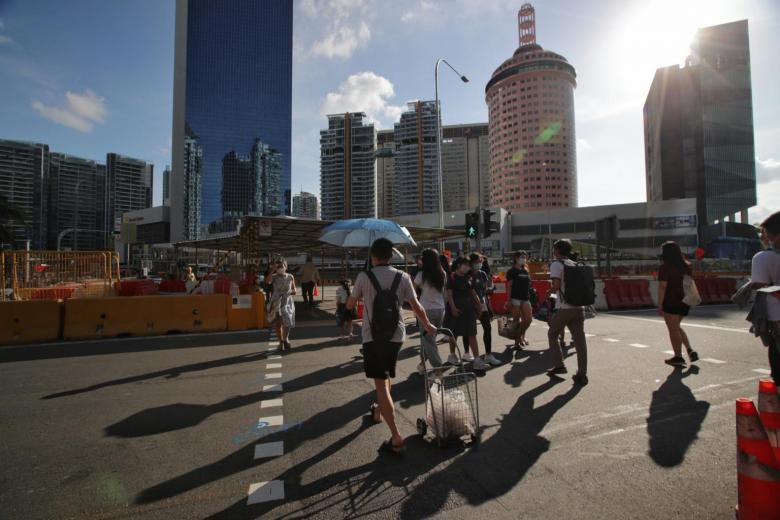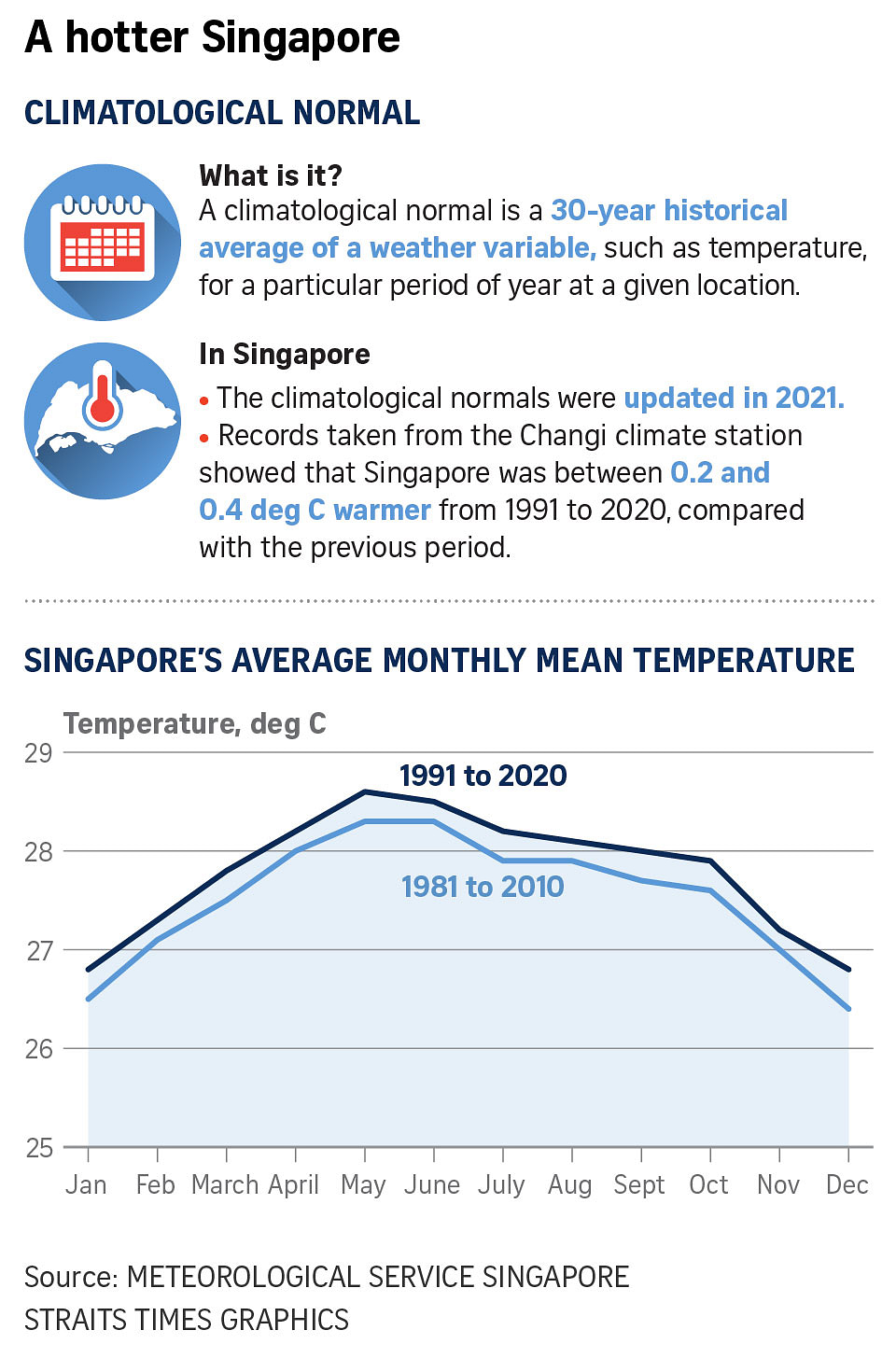2021 was Singapore's 10th warmest year on record despite La Nina events
Sign up now: Get ST's newsletters delivered to your inbox

Singapore's warmer than average conditions were observed during the second half of 2021.
PHOTO: ST FILE
Follow topic:
SINGAPORE - Despite back-to-back La Nina events which tend to have a cooling effect on Singapore's temperature, last year was the Republic's 10th warmest year on record since 1929, said the weatherman in a report on Wednesday (March 23).
The climate phenomenon known as La Nina brings more rain and cooler temperatures over equatorial South-east Asia.
Singapore's warmer than average conditions were observed during the second half of 2021, when the weather was relatively drier, said the Meteorological Service Singapore in its 2021 Annual Climate Assessment Report.
The annual mean temperature in 2021 was 27.9 deg C - 0.1 deg C above the long-term average of 27.8 deg C - making it the 10th warmest year in the last 92 years.
The decade from 2012 to 2021 was Singapore's warmest decade on record, with 2016 and 2019 being the joint warmest years on record with an annual mean temperature of 28.4 deg C.
2021 is expected to be among the seven warmest years on record, according to six leading international datasets consolidated by the World Meteorological Organisation (WMO).
WMO said in a statement on Jan 19 that global warming and other long-term climate change trends are expected to continue as a result of record levels of heat-trapping greenhouse gases in the atmosphere.
Professor Petteri Taalas, WMO's Secretary-General, said then that consecutive La Nina events meant that the warming experienced in 2021 was relatively less pronounced compared to recent years.
"Even so, 2021 was still warmer than previous years influenced by La Nina. The overall long-term warming as a result of greenhouse gas increases is now far larger than the year-to-year variability in global average temperatures caused by naturally occurring climate drivers," he added.
During a La Nina event, trade winds that typically blow from the eastern tropical Pacific Ocean to the western part of the basin intensify. This causes warm water around the maritime continent - which includes Singapore and Indonesia - to be more tightly confined around it.
The concentrated moisture supply fuels the formation of rain clouds that bring more rain.
Last year was also Singapore's second wettest year since 1980, said the MSS report.
January and August were much wetter months than usual.
In particular, total rainfall in January (480.5 mm) and August (426.2mm) were at least twice their respective long-term monthly averages, resulting in the wettest January and August in the past 40 years.
The annual total rainfall recorded was 3167.7mm when averaged across islandwide stations with long-term records, which was 25 per cent above the long-term annual average rainfall of 2534.4mm.

This was contributed to by back-to-back La Nina events, combined with a negative Indian Ocean Dipole event that led to the wetter-than-usual conditions in 2021, the report added.
The negative phase of the Indian Ocean Dipole brings more rain than usual to countries in the eastern end of the Indian Ocean basin, including Singapore.
The weather phenomenon is associated with changes in atmospheric pressure and sea surface temperature across the Indian Ocean.

